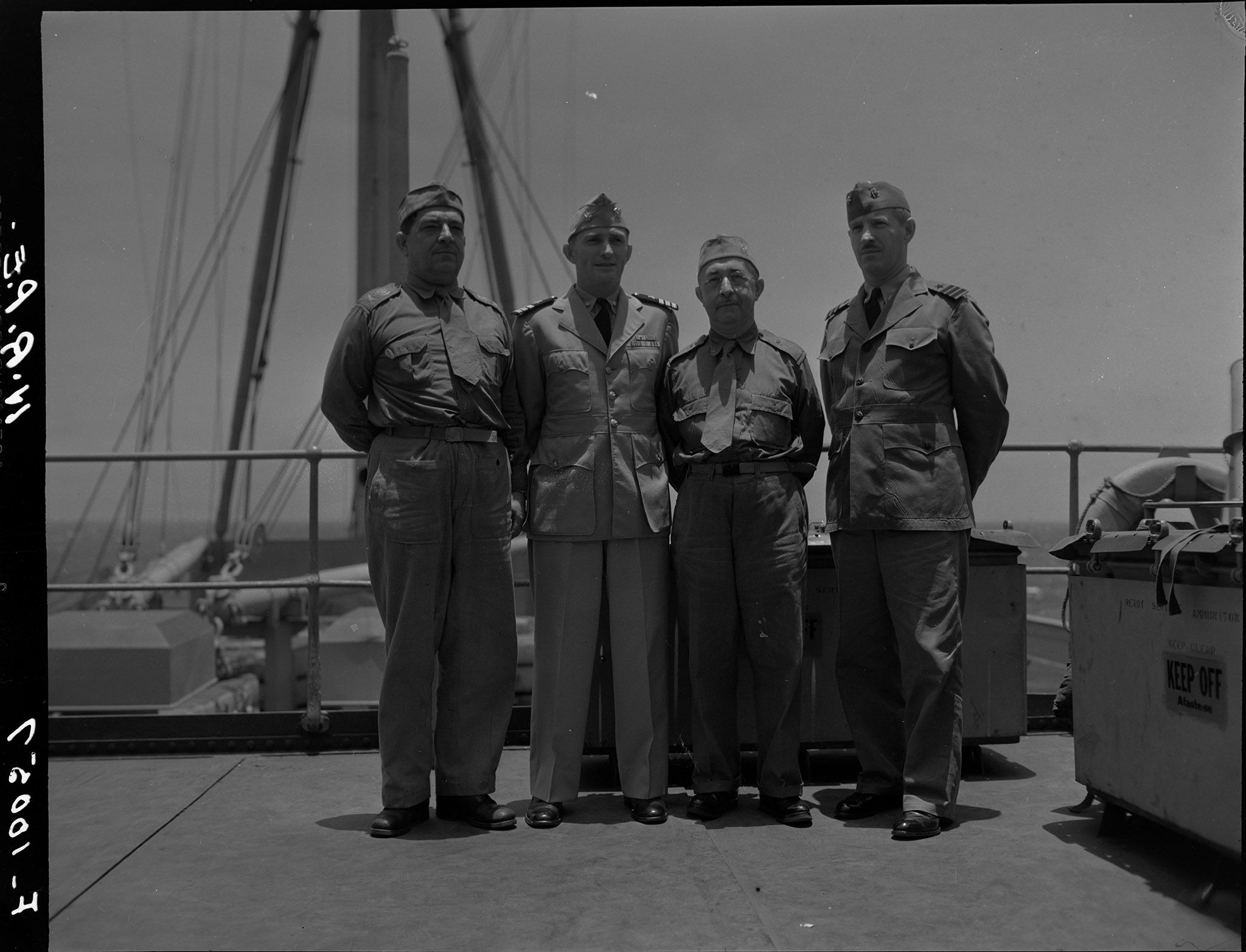
The Mariners’ Museum: P0003/01-#F-10057
It’s National Hispanic Heritage Month! So we at The Mariners’ Museum and Park wanted to take time to celebrate multicultural maritime history by acknowledging parts of our Collection that may go unnoticed. As I was scrolling through our vast Collection, I found 11 photographs that seem to pertain to Brazilian Major General João Baptista Mascarenhas de Morais, who greatly aided the Allies during World War II and who has a remarkable story. These photographs are from the thousands of images we have of the Hampton Roads Port of Embarkation. It is important to note that Brazilians are not a part of the Hispanic community as they speak Portuguese and would be considered Latino(a/x). However, in celebrating Hispanic Heritage Month, the Mariners’ decided to recognize people of all Hispanic and Latino(a/x) nationalities.
Born on November 13, 1883, in Brazil, João Baptista Mascarenhas de Morais (long name, I know!) worked hard and studied vigorously to attend military school by the time he was a teenager. A big supporter of his country, Mascarenhas de Morais proved to be a great leader during the siege of Italy in World War II. During much of the Second World War, Brazil was primarily a transportation and supply base. However, by January 7, 1944, Brazil would send armed troops to Europe to aid the Allied war effort.
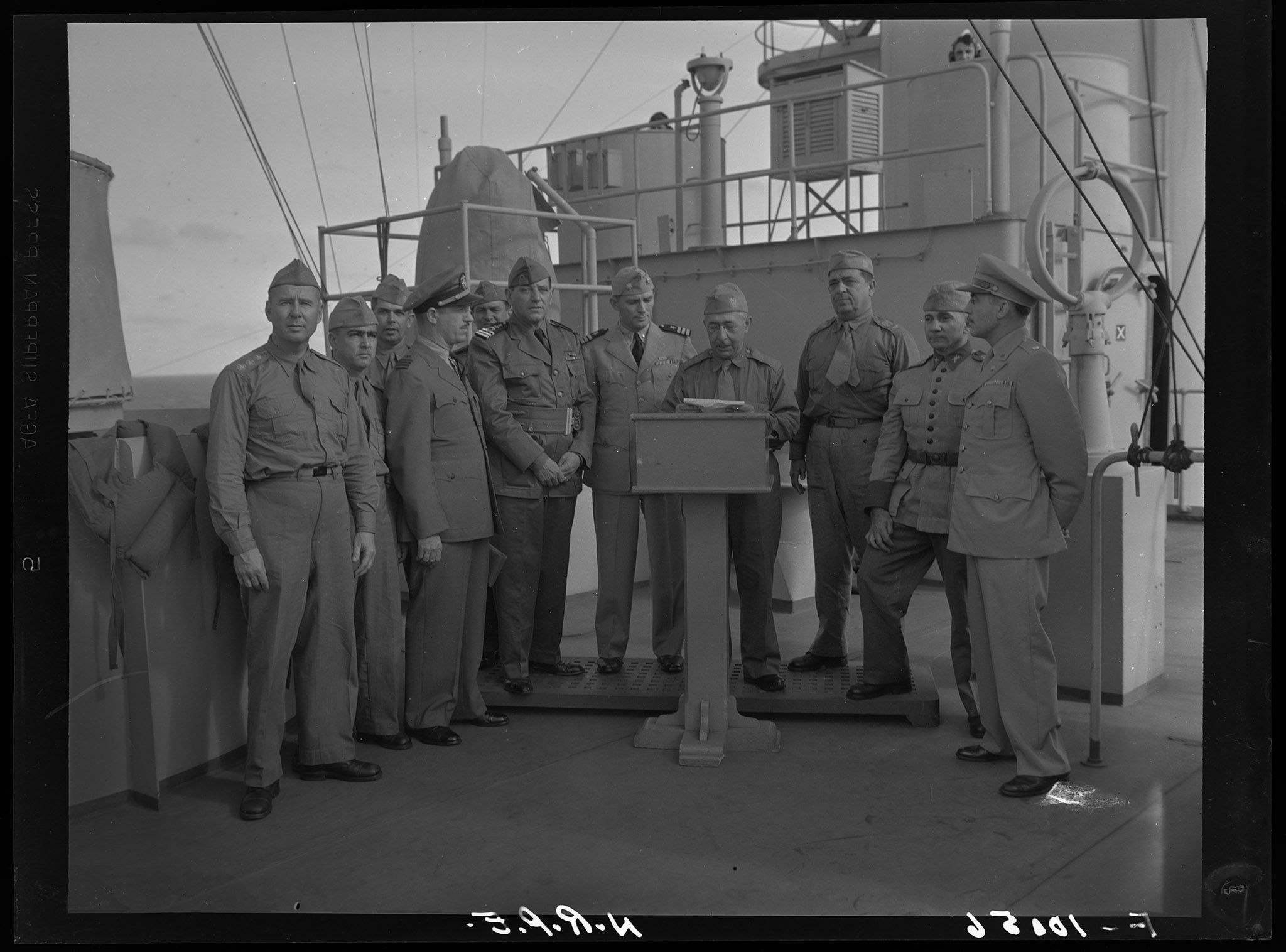
The Mariners’ Museum: P0003/01-#F-10056
Italy was under siege in July 1943, which led to the collapse of the Fascist Italian regime and the fall of Mussolini, who was incarcerated on July 25th, 1943. However, the Germans acquired some Italian soil and fought back. This led to the need for Brazil’s involvement in the war. However, Brazil’s military still needed to be adequately reassembled for war. “In 1943, the Brazilian army did not have standing divisions ready for intensified training and transportation,” stated F. D. McCann in his book, Brazil and the United States during World War II and Its Aftermath, “but rather it was organized in static geographic regional commands which presided over dispersed regimental-sized units.”
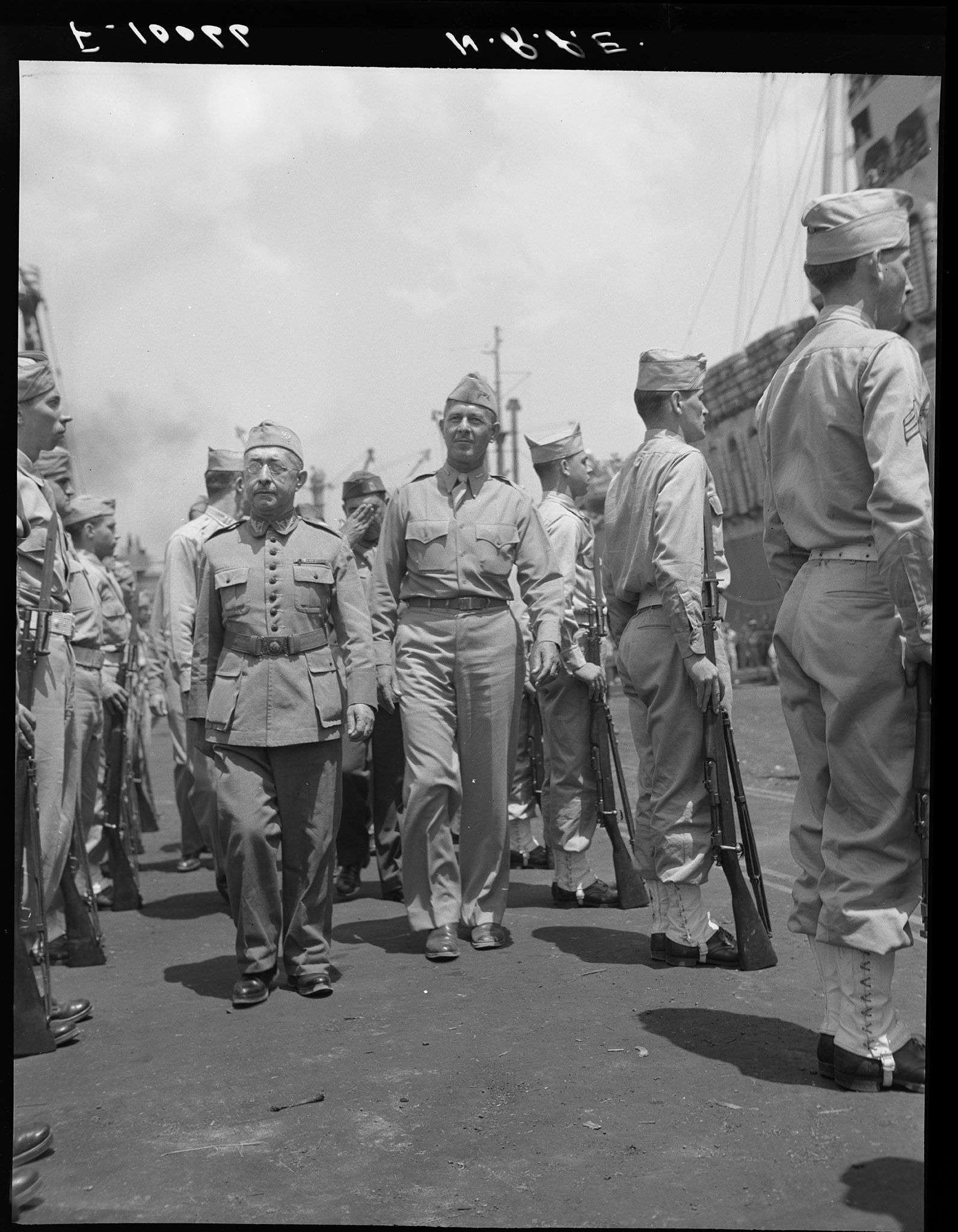
The Mariners’ Museum: P0003/01-#F-10066
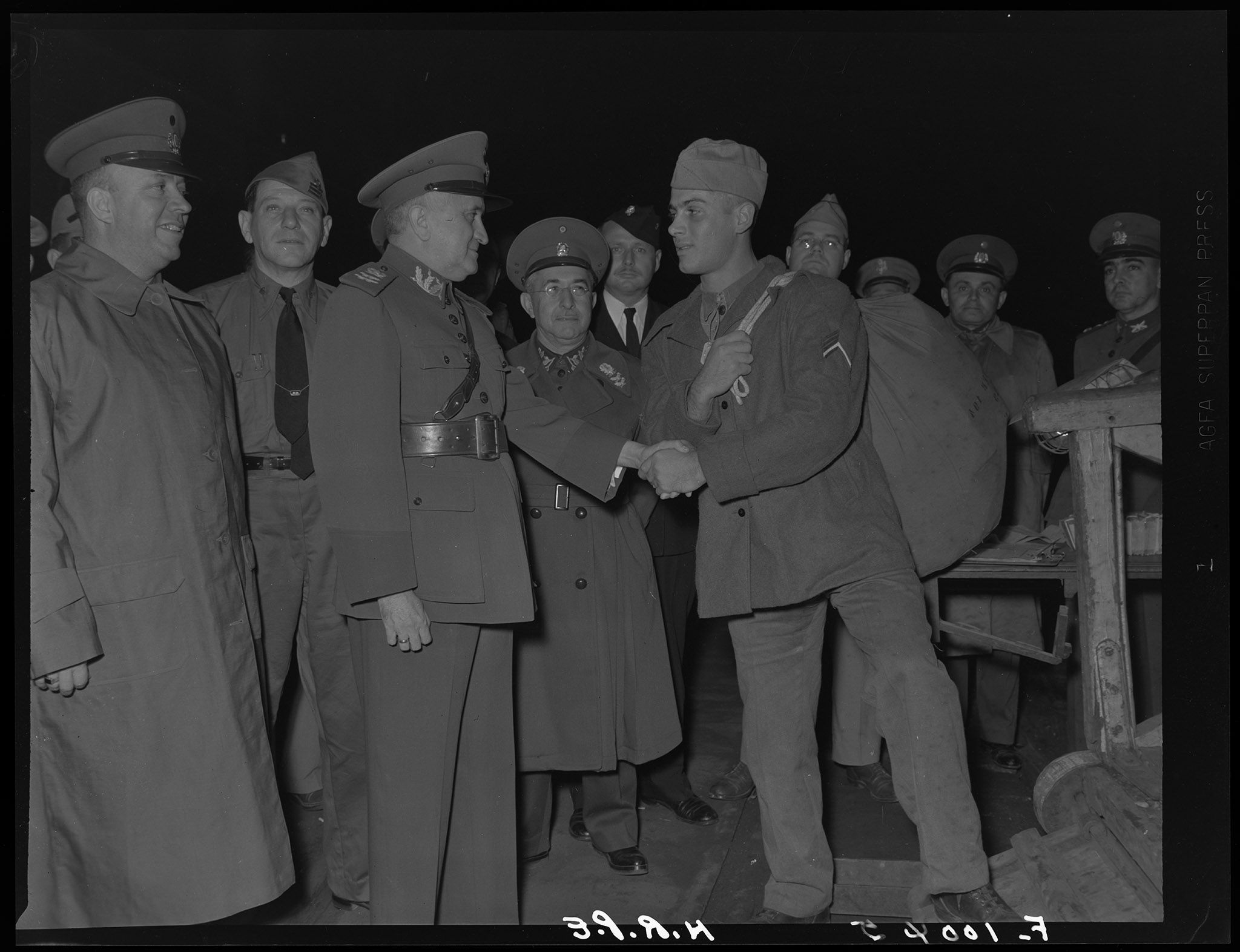
The Mariners’ Museum: P0003/01-#F-10045
The Brazilians would eventually serve under the American Fifth Infantry, but first, they needed to establish military personnel. This is where the Brazilian Expeditionary Force, the Smoking Cobras, comes in. President Vargas wrote to General Estevão Leitão de Carvalho, the Brazilian Expeditionary Force army representative on the mixed defense commission in Washington, authorizing him to discuss with the War Department the formation of a Brazilian Expeditionary Force. Vargas said that such a force would consist of a maximum of three infantry divisions, one armored and motorized division, plus suitable supporting troops and a fighter squadron,wrote F. D. McCann.
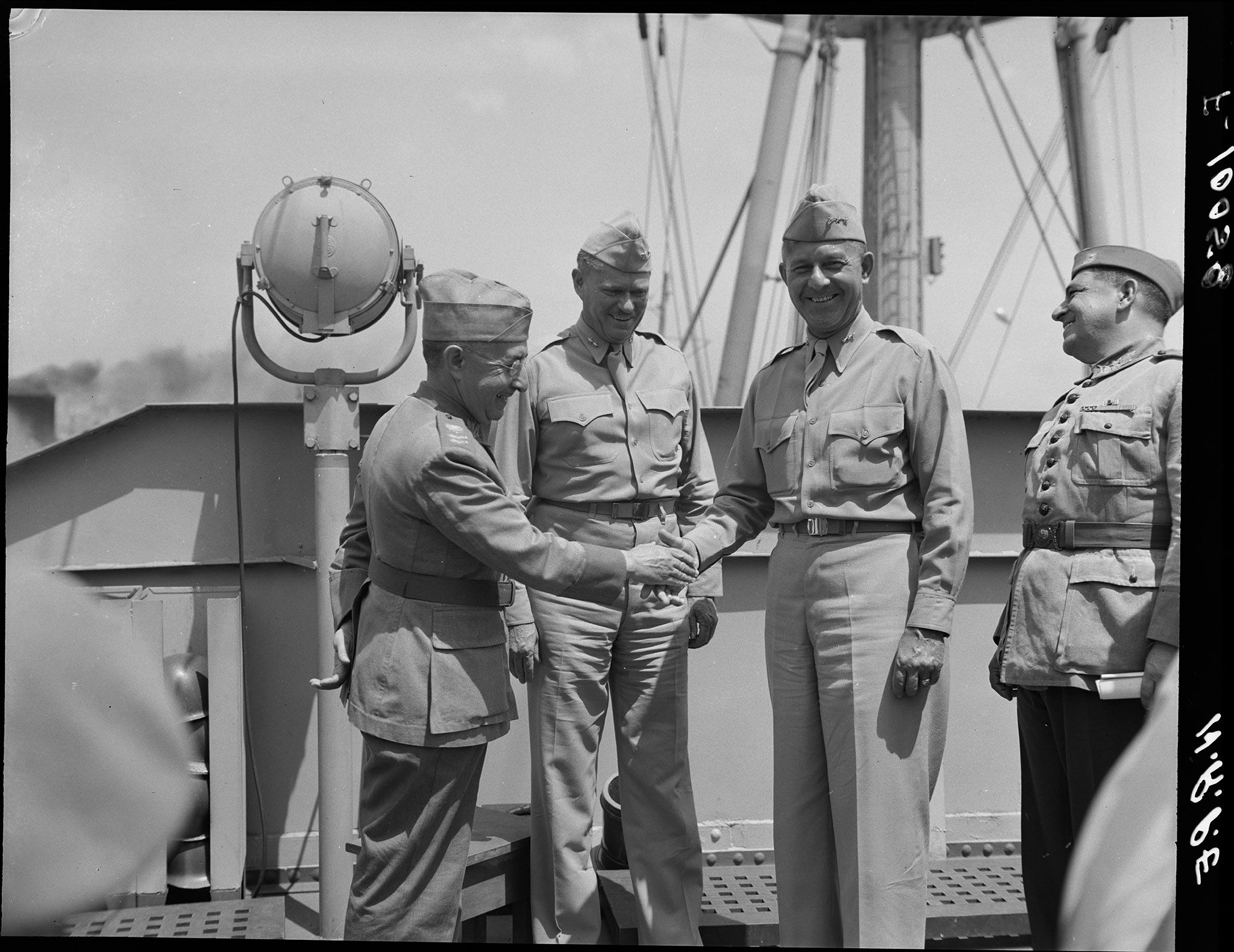
The Mariners’ Museum: P0003/01-#F-10058
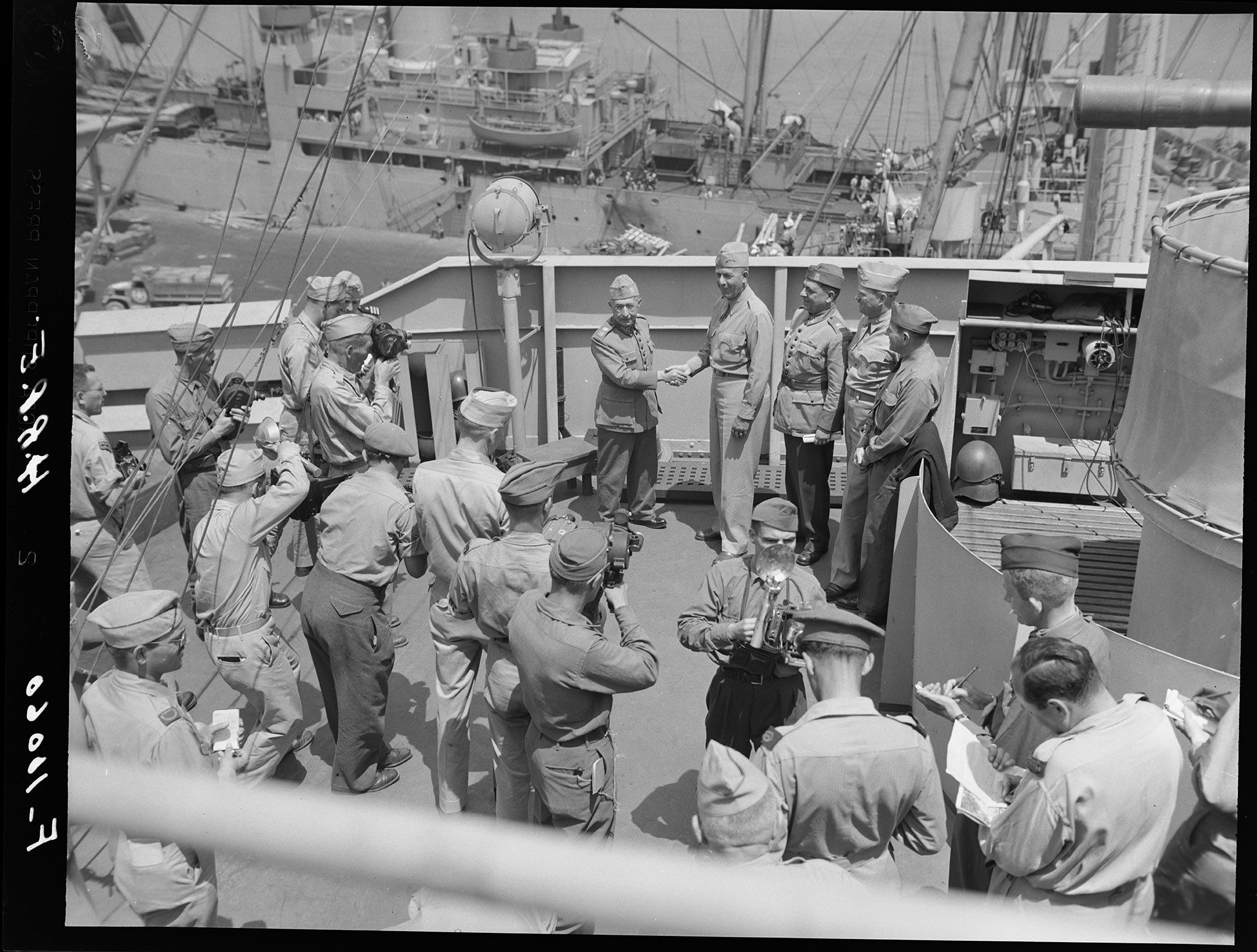
The Mariners’ Museum: P0003/01-#F-10060
However, he was eager to get on board (quite literally!) to work with the Americans: “The absolute authority of the Fifth Army’s aviation and artillery is remarkable and the great offensive spirit of the American infantry has overcome terrible obstacles” stated Mascarenhas de Morais.
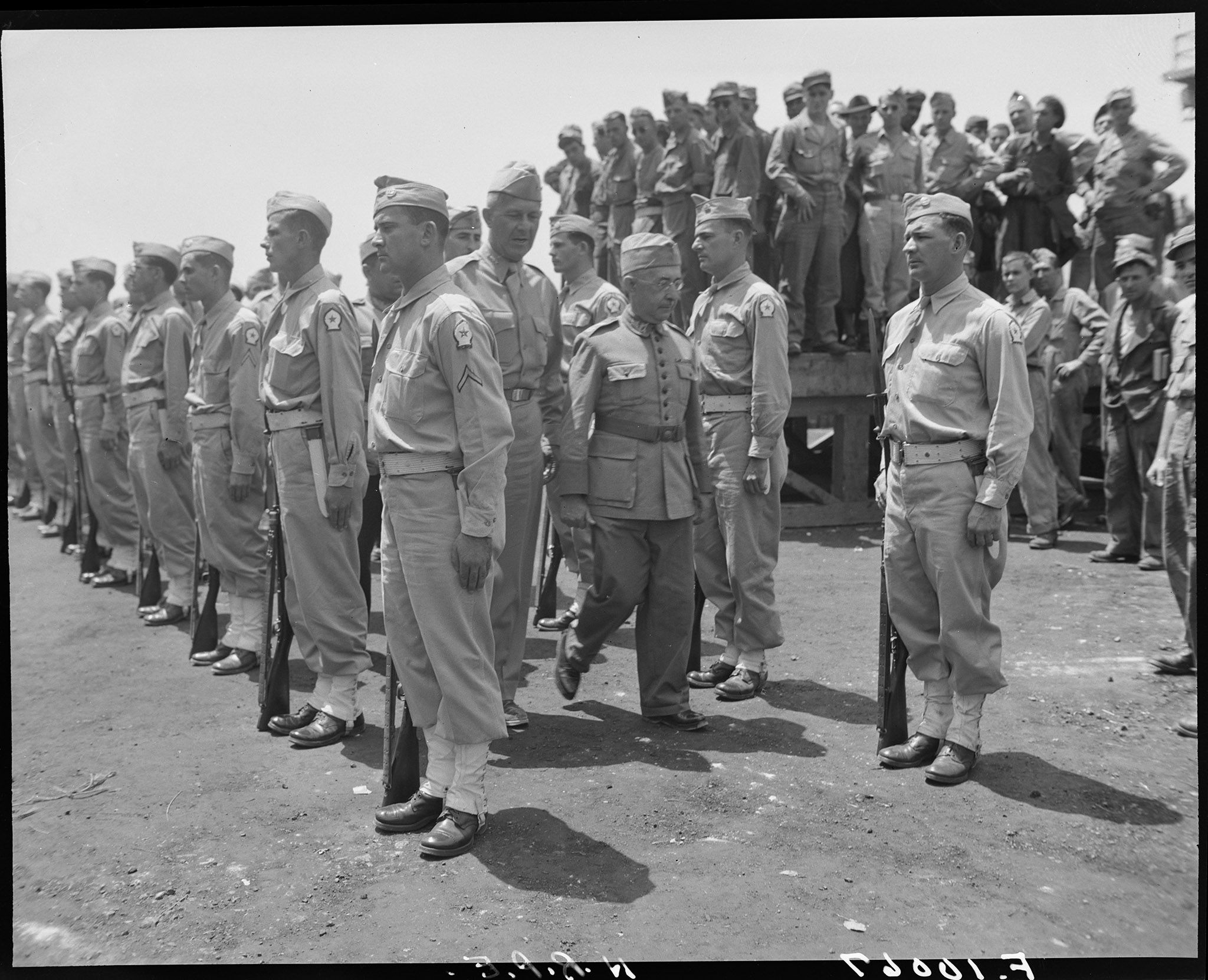
The Mariners’ Museum: P0003/01-#F-10067
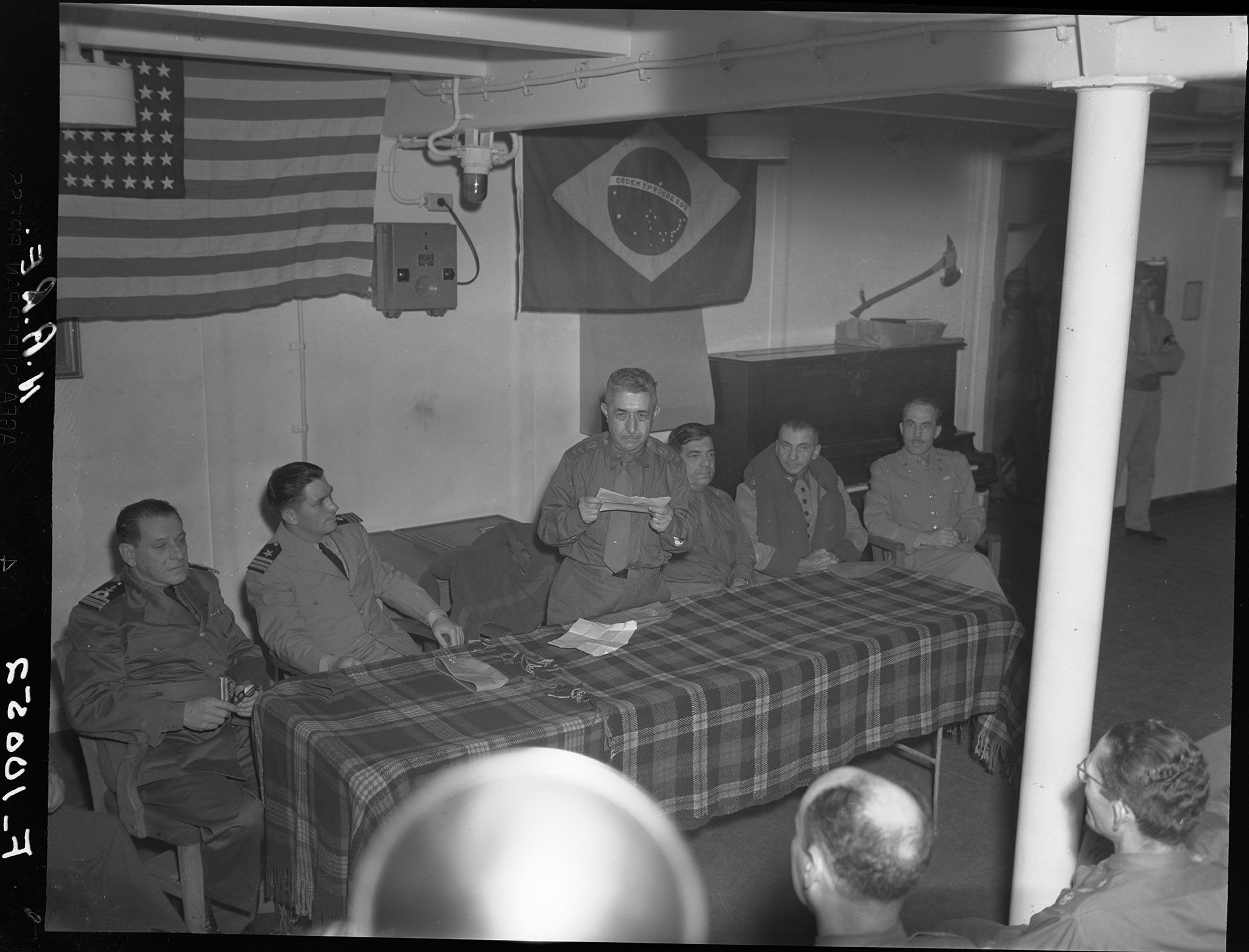
The Mariners’ Museum: P0003/01-#F-10052
After having just previously been in command of the Brazilians’ northeastern military region from June to January 1943, Mascarenhas de Morais responded immediately to the president’s request. In fact, he was the first to respond out of all the military leaders in Brazil. His eagerness eventually led to his acquisition of the only group of Latin American armed forces heading to Europe. Essentially, budget cuts were imposed, which led Mascarenhas de Morais and a group of military officials to lead 30,000 troops to Europe to aid the Allies. After about a year of the Smoking Cobras fighting alongside the Allies, an end was in sight! After all was over, 460 of the 30,000 Smoking Cobras were killed in battle. As disheartening as it is to see people lose their lives for a worthy cause, it should be noted how few died as compared to how many joined.
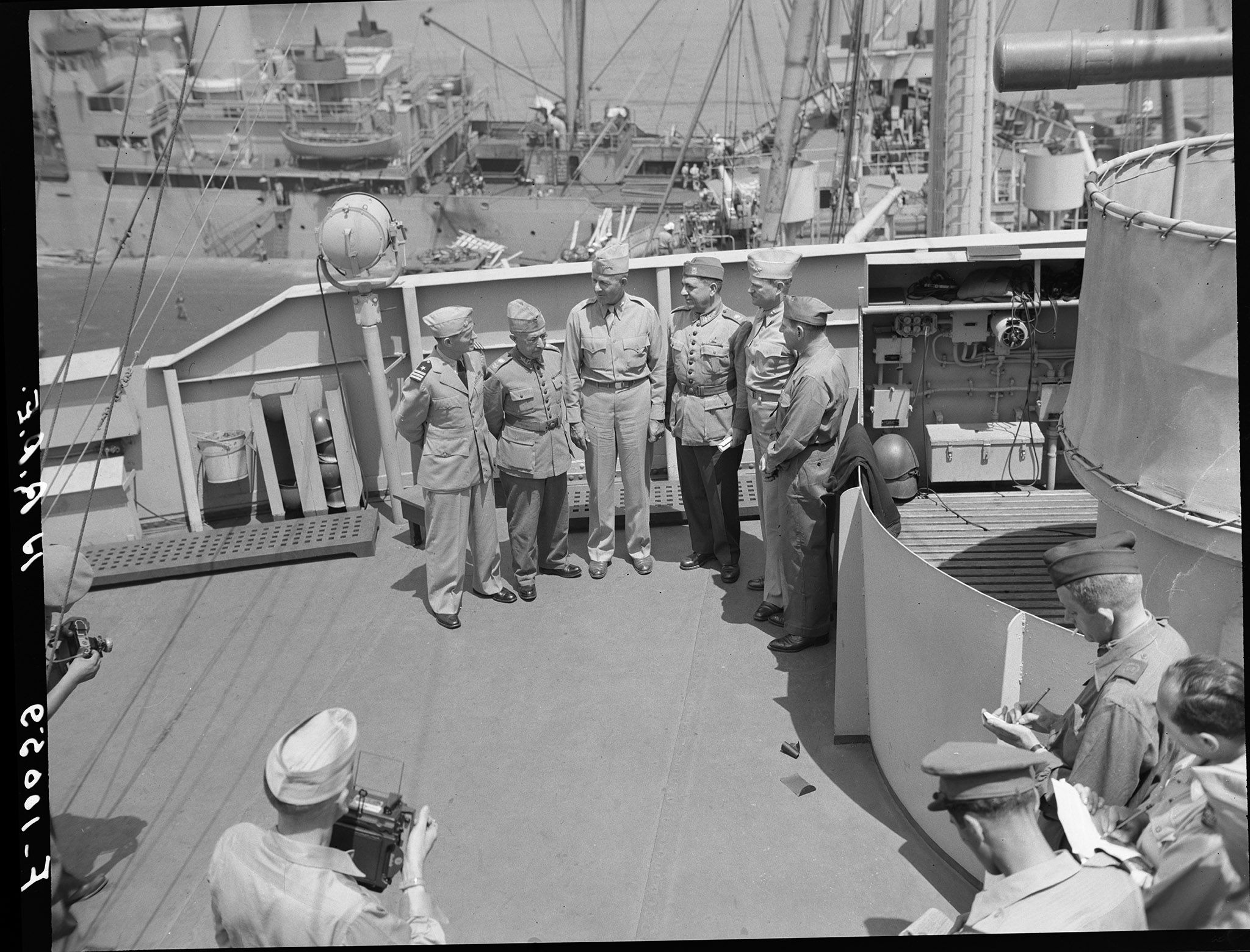
The Mariners’ Museum: P0003/01-#F-10059
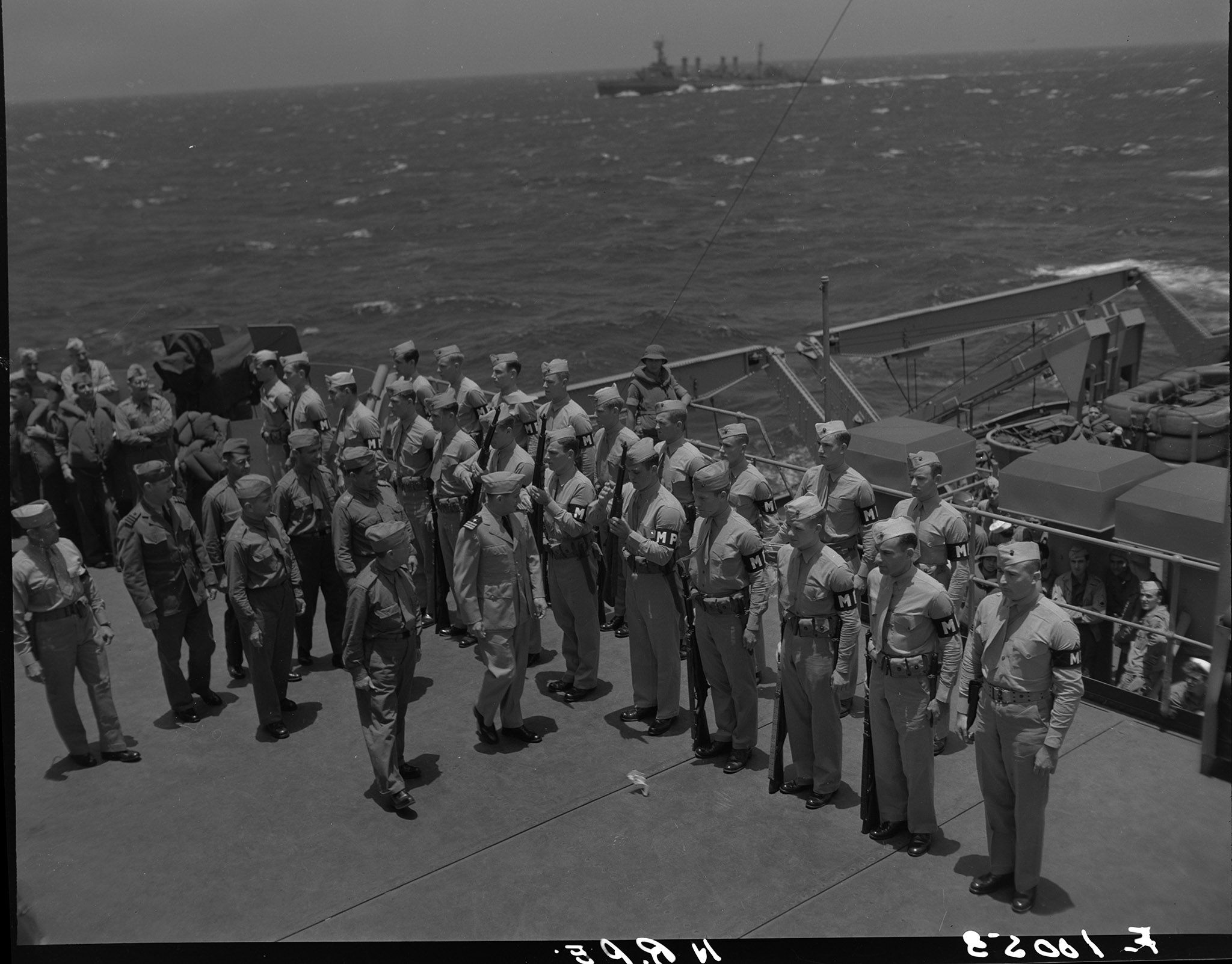
The Mariners’ Museum: P0003/01-#F-10053
Mascarenhas de Morais proved himself a leader who stepped up and took action when it was required of him.With his leadership skills universally praised, Mascarenhas de Morais was officially acknowledged for his service in battle on November 20, 1945. His retirement followed less than a year later, on October 23, 1946. João Baptista de Mascarenhas de Morais lived a quasi-peaceful retirement. Still, his struggles with longstanding physical health issues soon took a toll on him, and he passed away on September 19, 1968. His peers admired his courage. His eagerness to join the cause by fighting alongside the Americans showcased genuine bravery, experience, and nationalistic pride. In many ways, Major General Mascarenhas de Morais’s story is truly remarkable. Leading the only Brazilian military team into battle hundreds of miles away from their homeland proves the daringness of his ventures. His story is what we at The Mariners’ Museum strive for in storytelling: connecting people to our shared maritime heritage through experiences of courage and admiration over the world’s waters.
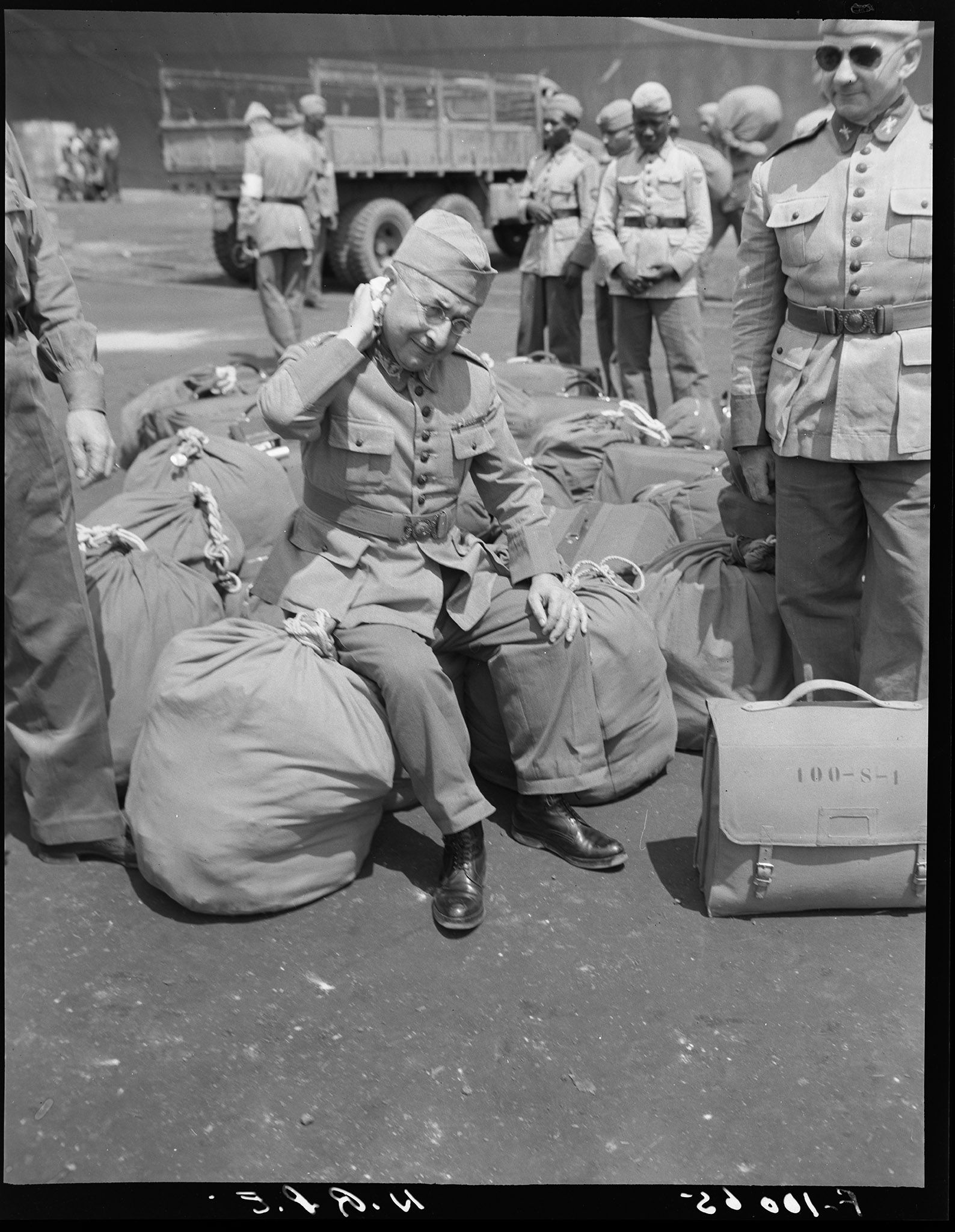
The Mariners’ Museum: P0003/01-#F-10065